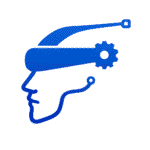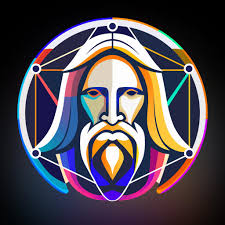Introduction to AI Image Generation Tools
Welcome to our comprehensive guide on AI image generation tools. If you’ve ever wondered how you can create stunning images using AI, similar to how you might generate a PowerPoint presentation, then you’re in the right place. In this article, we’ll explore popular AI tool — Leonardo.ai that allow you to generate images effortlessly. Whether you’re a beginner or someone looking to dive deeper into AI-based image generation, this guide will walk you through everything you need to know.
Table of Contents
Introduction to Leonardo.ai
Leonardo.ai is a versatile tool that lets you generate images using AI, similar to how you would create content using a slide deck generator. Whether you’re looking to create simple images or complex animations, Leonardo.ai has you covered. Once you log in to the platform, you’ll be greeted with a user-friendly interface displaying images created by other users.
The platform offers some free tokens that reset every 24 hours, allowing you to generate between 25 and 30 images daily without running out of credits. This makes Leonardo.ai suitable for both casual users and those who need to generate a large number of images.
Key Features of Leonardo.ai
Image Generation
The core feature of Leonardo.ai is its ability to generate images based on your prompts. You can choose different themes like photography, animation, or art, depending on your needs. The platform also allows you to select image dimensions, such as square (1:1), landscape, or portrait.
One standout feature is the Advanced Settings, where you can define Negative Prompts—specific attributes you want to avoid in your images, like blurriness or low resolution. This ensures that the generated images meet your quality standards.
For example, if you want to create an image of a popular character like Groot, you can specify that the image should not include blurriness or low resolution. After setting your preferences, the AI generates the images based on your input.
If you’re unsure about how to create the best prompts, you can use the Neural Writer feature. This tool helps you craft detailed prompts that yield more refined images.
Motion Generation
Leonardo.ai doesn’t just stop at static images; it also allows you to create animations. With the Motion Generation feature, you can animate your static images by adjusting the motion strength. This is perfect for creating short, animated clips from your images.
For instance, if you upload an image and want to add a subtle motion effect, you can adjust the motion settings and generate an animated version. The final animations are saved in your personal field, where you can view all your creations.
Real-Time Canvas
The Real-Time Canvas feature provides a unique way to generate images. Instead of relying solely on text prompts, you can draw directly on the canvas, and the AI will generate an image based on your drawing. This feature is incredibly useful when you want more control over the output, especially if text-to-image generation doesn’t give you the desired results.
For example, if you sketch a landscape on the left side of the canvas, the AI will generate a detailed image on the right side. You can compare different AI-generated alternatives alongside your original drawing to choose the best result.
Real-Time Generation
One of the most impressive tools in Leonardo.ai is the Real-Time Generation feature. This tool allows you to create highly realistic images instantly. You can adjust various elements, such as the strength of effects or specific image types like coloring books.
For example, if you’re working on an image of a car, you can see it being generated in real-time. Add details like a horn or change the car’s color to red, and the image updates instantly, providing a seamless real-time generation experience.
Image Upscaler
If your generated image appears blurry, you can use the Image Upscaler tool to enhance its quality. This feature includes options for upscaling and editing, making it easy to improve the resolution of your images.
The upscaler also supports motion generation. After a short processing time—usually around two minutes—the enhanced image or motion-generated video will appear in your personal field, ready for you to view and use.
Exploring Playground AI
While this article focuses on Leonardo.ai, it’s worth mentioning another powerful tool: Playground AI. Similar to Leonardo.ai, Playground AI offers a range of features for image generation, animation, and more. If you’re looking for an alternative or additional tool, Playground AI is definitely worth exploring.
Conclusion
Leonardo.ai is an exceptional tool for anyone interested in AI-powered image generation. Whether you’re creating static images, animations, or real-time designs, this platform provides all the tools you need. From its user-friendly interface to its advanced features like Negative Prompts and Real-Time Canvas, Leonardo.ai makes image creation accessible and fun for everyone. If you’re new to AI image generation, start with the basic features and gradually explore the more advanced options. And if you’re looking for more, don’t forget to check out Playground AI for additional capabilities.


Leave a Reply